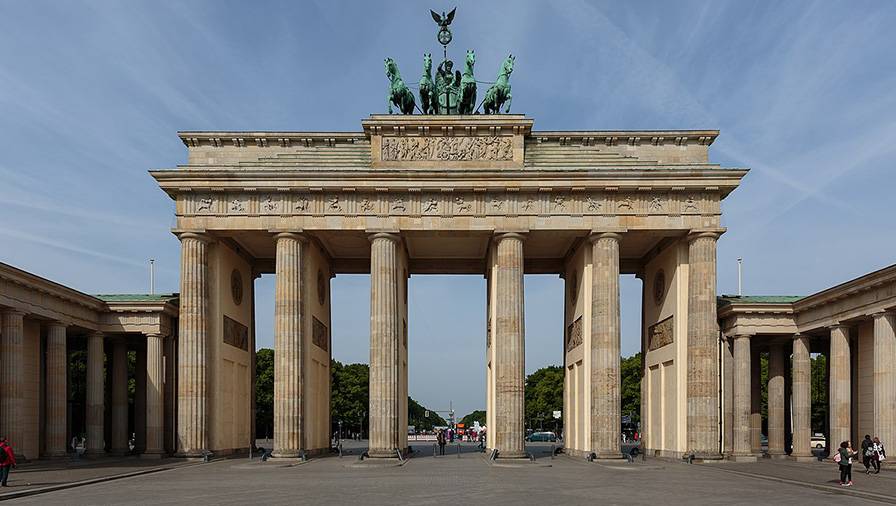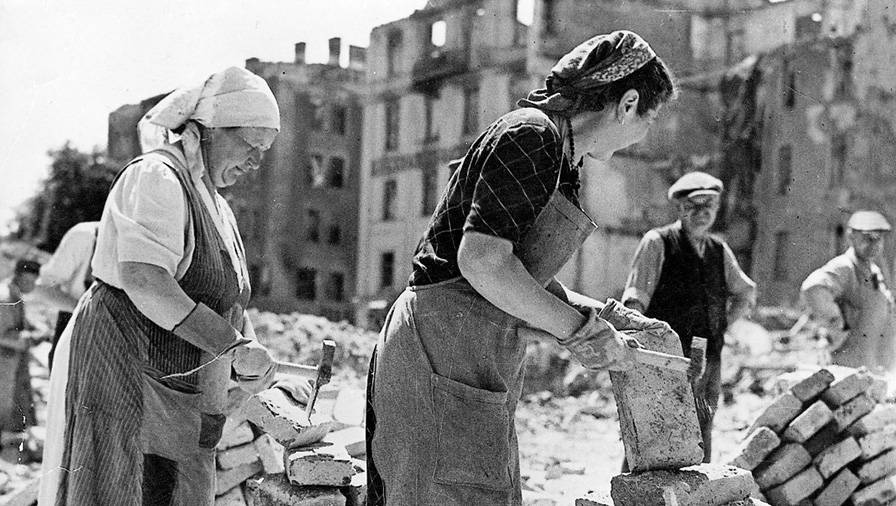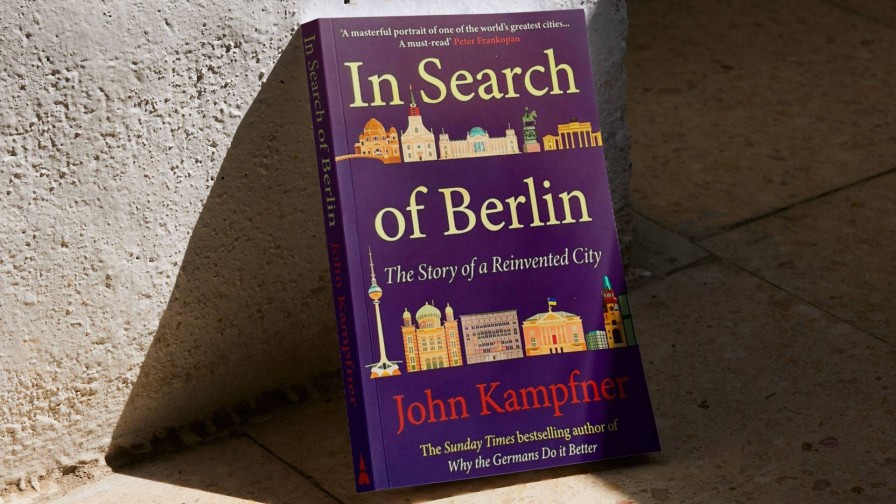Berlin: city of militarists, merchants, and migrants
What made Germany’s capital great also brought its destruction.
WATCH: NBR columnist Nevil Gibson speaks with Maria Slade.
What made Germany’s capital great also brought its destruction.
WATCH: NBR columnist Nevil Gibson speaks with Maria Slade.
Not so long ago, before the retirement of Angela Merkel, I favourably reviewed Why Germans Do It Better, a book describing the post-World War II recovery of Germany and its status as the leader of a united, liberal democratic Europe.
A lot has happened in the two and a bit years since. Germany is now reported, from The Economist to The Guardian, as having Europe’s sickliest economy and its least inspiring political leadership.
Just about every sector of society – from farmers, lorry drivers, and self-employed tradies losing their tax exemptions to low confidence in big business – is unhappy. Strikes affecting public transport were once rare but are now a common experience.
Merkel’s replacement, Olaf Scholz, leads a coalition of three parties on the left and right – but not Merkel’s former Christian Democrats.
Scholz’s Social Democrats (SPD) have been part of every German government for all but four years in the past quarter-century. Its popularity has slumped to 15% after coming first in the post-Merkel election of 2021. Like France’s lukewarm Socialists, the party faces electoral oblivion in the next round of elections.
Latest polls show the Christian Democrats (31%) in the lead, followed by AFD (Alternative for Germany), which takes a hard line against immigrants, on 20%. The other coalition parties, the Greens and the pro-business Free Democrats, are on 13% and 4% respectively. The Left, former communists, is on 3% and is being challenged by a new radical movement.
The biggest change in political fortunes has come from the rise of AFD, as many Germans, particularly in the former communist eastern states, blame the shrinkage of real disposable incomes in the past two years on the influx of immigrants from the Middle East and Africa, attracted by generous welfare benefits.
While AFD has ridden a wave of populism, hundreds of thousands of Germans turned out for demonstrations against right-wing extremism. But this cannot restore Germany’s “doing it better” business reputation, which has been shattered by policy responses on energy issues, inflation, the Russian invasion of Ukraine, low uptake of digital technology, and consumer resistance.
In mid-January, Rainer Dulger, head of the Confederation of German Employers’ Associations, said: “It hurts me to see how low Germany has sunk in the past two years.”

John Kampfner.
None of this domestic turmoil is likely to dent the tens of thousands of Kiwis who each year head for the warmth and sensory stimulation of Europe in the summer. It also hasn’t fazed John Kampfner, author of Why Germans Do It Better.
His new book, In Search of Berlin, is part-history and part-travel guide of Germany’s capital from its origins in the 13th century. Kampfner is a former editor of the New Statesman and foreign correspondent for several of the UK’s major newspapers. This included a stint in the German Democratic Republic just before it collapsed in 1989.
He mixes historical description with personal observations from searching for any signs of Berlin’s past. In its 800 years, it has risen from the youngest of Europe’s major imperial capitals to be its largest and most powerful, while also falling on occasions into near oblivion from destructive wars.
It has never risen to the wealth of its peers in Germany or elsewhere, and lacks a reputation for making anything useful. “Berlin has stumbled from enlightenment to militarism, from imperialism to democracy, from village to world city to surrounded island,” is Kampfner’s summary.
In turn, Berlin has been a trading post, military barracks, centre of science and learning, and a “hotbed of self-indulgence and sex”. The Holocaust was plotted and controlled from Berlin and, during the Cold War, it was the “front line of communism and hangout for hippies and draft-dodgers”.
It had two failed revolutions – in 1848 and 1919 – the first popular uprising against communism in 1953, and a successful peaceful one in 1989.
Geographically, Berlin had little going for it: the confluence of the Spree and Havel rivers was in a featureless plain with no access to the sea. At the end of the religious 30 Year War in 1648, its population was one-60th of London’s and one-75th of Paris’s.
But the ruling Hohenzollern family took advantage of others’ bad decisions, such as the expulsion of the entrepreneurial and Protestant Huguenots by Louis XI of France in 1685. They joined other enterprising immigrants and refugees, including Jews from Austria, Bohemians, and Poles.
As a result of Berlin’s rapid expansion as a centre of commerce, Friederich III felt empowered enough to declare himself King Friedrich I in Prussia in 1701, setting in train the rapid growth of an empire that at its peak extended from most of today’s Poland in the east to the borders of Holland and Belgium in the west.

Berlin’s Brandenburg Gate was built from 1788-91.
This expansion occurred under Friedrich II (The Great) and King Friedrich Wilhelm I, who waged wars against Austria, Russia, Poland, Saxony, France, and Bavaria. Berlin’s military power was matched in the arts, culture, and impressive architecture, prompting Voltaire to describe Prussia as “Sparta in the morning, Athens in the afternoon”.
Stagnation under Friedrich Wilhelm II, who built Berlin's signature Brandenburg Gate, was followed by Napoleon’s occupation in 1806, which gave Berlin self-government for three years but also meant the plundering of the city’s treasures.
Berlin was on the rise again by the time of Napoleon’s defeat and abdication in 1814. Prussia lost most of its eastern possessions but Berlin gained further status as leader of German culture, with the establishment of a university.
One of its rectors was the philosopher Hegel, who saw the state as “the highest form of institutionalised freedom”. Its graduates included Marx, Engels, Schopenhauer, Planck, and Marcuse.
The 19th century saw more territorial expansion at the expense of Austria, France, and Denmark, while the invention of railways soon had Berlin at the centre of a spiderweb throughout central Europe. In 1879, the first electric street car entered service in Berlin, which was the fifth city in the world to get an underground rail network after London, Budapest, Glasgow, and Paris.
The unification of the German states in 1871 under Chancellor Otto von Bismarck created the most powerful nation in Europe. King Wilhelm I declared himself Kaiser, or emperor. It was a time of “high living, of making money and spending it”.

Berlin’s KaDeWe department store, first opened in 1907, was rebuilt in the 1950s.
Prestige department stores first arose in Berlin, with its many merchants and factory workers. The population doubled to two million from 1800-90, and again to four million from 1900-14, when Berlin was the largest city in Europe with a density that rivalled Tokyo in 2017.
World War I inflicted another round of destitution and revolution, before ushering in a brief period of prosperity under the Weimar republic, which is best remembered for its flourishing arts scene (41 new operas), an unrivalled ‘gay’ culture that attracted another influx of immigrants, and the world’s best film production centre before Hollywood.
But financial disaster and hyperinflation soon ended this fling, as the Nazis took control, believing Berlin’s modernism and decadence to be unGerman. At this point, Kampfner turns from historian to tour guide of today’s Berlin.
Chapters on the Nazis, East and West Berlin, and the roles of Jews and Russians are interspersed with details of museums, monuments, and memorials that mark events from the 1930s. These range from Hitler’s triumphant staging of the Olympics in 1936 to the failure of his grand plans for ‘Germania’ – a massive reconstruction of Berlin. (An exhibition is at Gesundbrunnen station on the U8 U-Bahn line.)
The squalor and rubble of defeated Berlin in 1945 was unprecedented in modern history. In the three months it was under Red Army control before the arrival of the Allied forces, the city was stripped of most of its factories, monetary wealth from its bank vaults, electrical equipment, and valuable artworks. When the British moved into the Spandau barracks, they found it empty of furniture, door handles, taps, light fittings and plugs.

Berlin’s Trümmerfrauen (rubble women) at work in 1948.
Yet an army of heroic Trümmerfrauen (debris women) set about clearing the rubble, brick by brick, for a rebuild that survived a food and power blockade in 1948, and the construction of a partition wall in 1961. Berlin was again a city of the “displaced and distressed, adventurous and angry”.
The western zone was heavily dependent on subsidies from the Federal Republic until reunification in 1989, while recent information revealed the Kremlin, too, often questioned whether its rump satellite was worth the cost. Today, a third of Berlin’s population are migrants and its top tourist attraction is a wall that has been gone for longer than it existed.

In Search of Berlin: The Story of a Reinvented City, by John Kampfner (Atlantic Books).
Nevil Gibson is a former editor at large for NBR. He has contributed film and book reviews to various publications.
This is supplied content and not paid for by NBR.